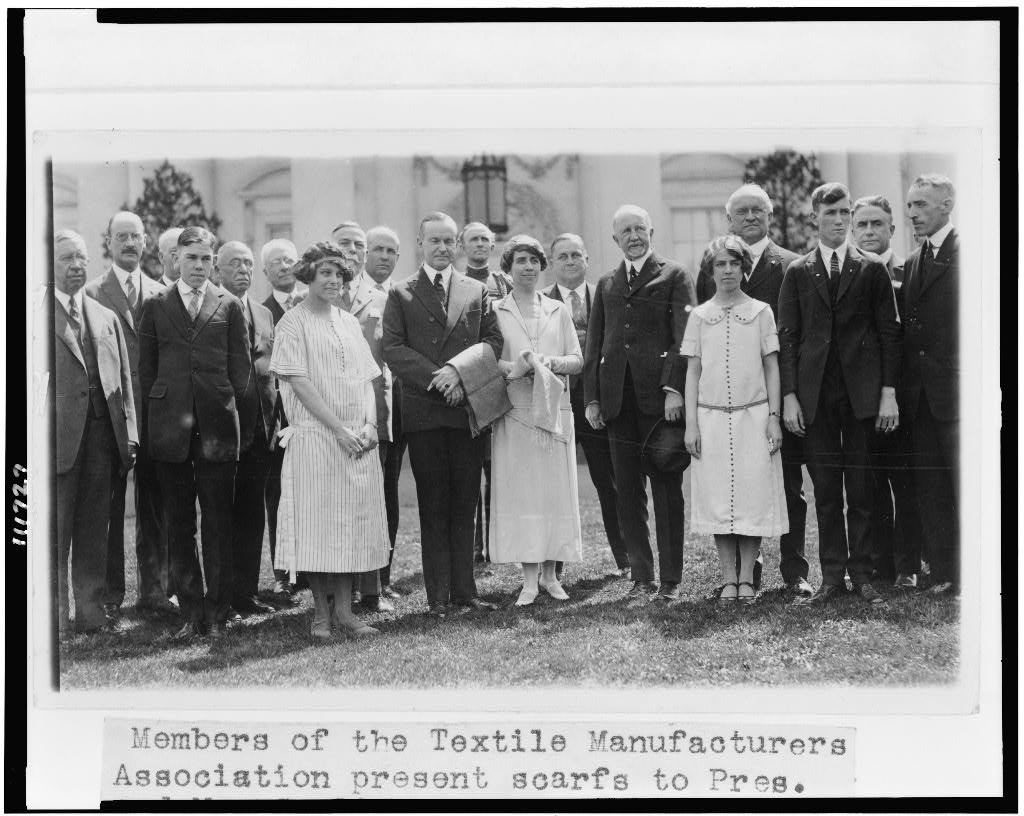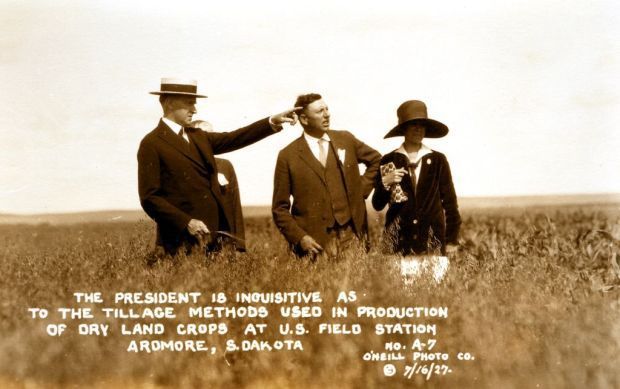
Members of the Textile Manufacturers Association presenting scarves to the Coolidges on the White House lawn, 1925. Courtesy of the Library of Congress.
Reflecting upon the previous six years of tax policy, including the recent passage of tax cuts, rather than proper tax reform, under the Revenue Act of 1924, President Coolidge observed, “High taxes were adopted as a war measure in 1918. We have had but six years’ experience under them, and their detrimental effect upon our fiscal structure is not yet fully appreciated. To the intelligent observer tendencies are already apparent which indicate the stress to which this structure is being put. I mention as an instance the increased cost of capital for new industrial enterprises. These influences are being felt even in our present prosperity. During the after-the-war period of adjustment, the other great nations of the world have been disturbed more than this country. They are not yet restored. As a consequence, we have been relieved of much of the world competition. When other countries return to productivity and become again the serious commercial rivals of our people, and when we experience those periods of depression which normally follow periods of prosperity, we should have our house in order by so establishing our tax system that its economic effects will be beneficial and not harmful. The bill [Revenue Act of 1924] represents tax reduction, not tax reform…A correction of its defects may be left to the next session of the Congress. I trust a bill less political and more truly economic may be passed at that time. To that end I shall bend all my energies.” (The Mind of the President, p.124).
